Computer History Museum - the place where IT is logged
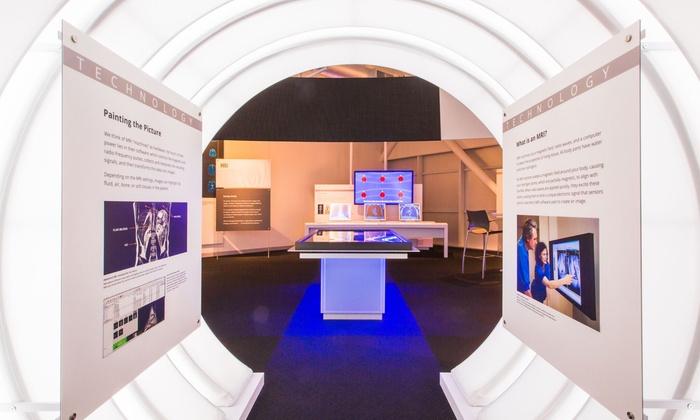
While the USSR was on a burning road toward communism, in the USA, after the sexual revolution and the struggle against the “red threat”, computer technologies were developed, and future IT giants were born in modest garages. And in this battle for the first million there were those who offered to look back and save the history of computers. In general, under the cut article about the largest museum about IT in the world - Computer History Museum. And this story is both about the equipment, people and the work they have done.
Project
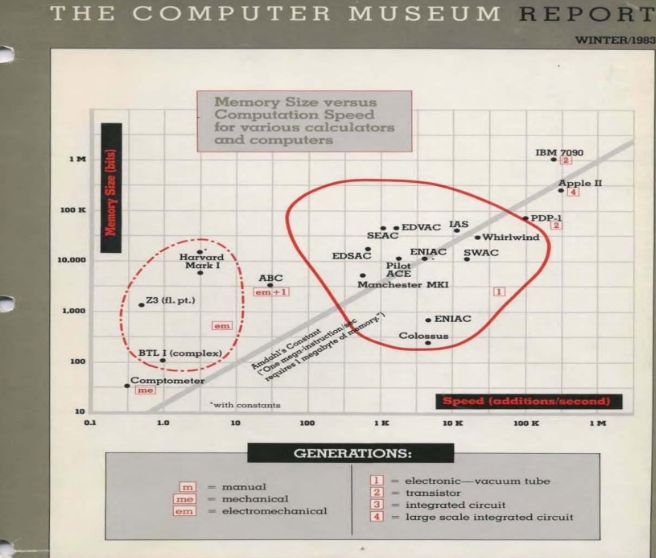
Like many startups, CHM started with an idea that lay on the surface and that no one saw. In 1971, computer engineer Gordon Bell and information technology researcher Allen Newell published the book “Computer Structure: reading and examples” , where they described the classification, the stages of development of computers and listed obsolete types of devices. A little later, Bell formulated the law of the same name on the development of computer technology: a new class of computing technology appears every ten years and replaces the previous one. This meant that only thirty years would pass and only a description would remain from today's computers.
At the same time, the US Navy decides to write off Whirlwind I’s “put on the gramophone needles” —the first computer with real-time control, magnetic memory, support for parallel computing — and its transistor version TX-0. It became obvious that it was necessary to save not only individual cars, but also the entire early history.

“Still-not-mouse” light pen to control through the monitor

Whirlwind i

Tx-0
Museum Project in former wardrobe
The idea of a computer museum was in the air. By this time, many technical museums had already collected artifacts of the computer age, but everywhere they became part of expositions about other areas of science and technology. From 1971 to 1975, IBM organized the “Computer perspective” exhibition with a colorful timeline on the development of computing technology from 1890 to 1950 and as a crown of this development:


In 1972, Gordon Bell became vice president of DEC - a leading manufacturer of mini-computers (less room, more cabinet). And in 1975, with the support of the company's president Ken Olsen, the Museum Project, a small exhibition of computer components from different generations, opened in a converted DEC wardrobe. She attracted attention and received the support of computer companies and scientists.
The digital computer museum
A new phase began when Ken Olsen received the decommissioned TX-0 and Whirwind I and turned for help to Gwen Bell, the wife of Gordon Bell. In 1978, it takes up the preparation of exhibits, and the following year, The Digital Computer Museum (TDCM), a full-fledged museum dedicated to computer technology, opens under the DEC wing.

Ken Olsen is known for the founding of the DEC and the prophetic phrase about the future of personal computers: “ Gordon Bell - the law of the same name and the creation of minicomputers DEC, but about his wife Gwen, we know much less. And very vain. An urban education specialist, she started working on the first English commercial computer DEUCE, analyzed the Boston reconstruction zone on TX-0, created the first GIS, and worked as a UN planning consultant.
Gwen lays the basic principles of the CHM, the formation of collections and for 20 years becomes its director. Landmarks are the German Museum in Munich and the Science Museum in London, where the exhibits show the development of technology from the earliest to the most modern samples. The opening of the museum began with a lecture by Maurice Wilks on the development of EDSAC, followed by stories from Grace Hopper, John Atanasoff, Jay Forrester and many other founders of computer technology.
Initially, the entire museum collection consisted of only 225 exhibits, covering the history of computing technology from Naper's sticks to DEC computers.
Some photos of the first exhibits: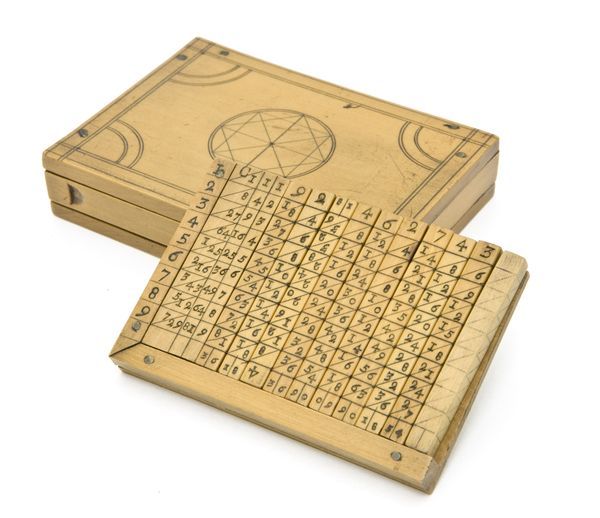
Палочки Непера — простейшее приспособление для умножения/деления.

“Millionaire” — 16-разрядный механический калькулятор начала XX века

Знаменитая Энигма — немецкая шифровальная машина времен WWII

Ферритовая память


Палочки Непера — простейшее приспособление для умножения/деления.

“Millionaire” — 16-разрядный механический калькулятор начала XX века

Знаменитая Энигма — немецкая шифровальная машина времен WWII

Ферритовая память

In 1982, in a report on the work of the museum, the main areas of work were formulated:
- Saving history. For this, a taxonomy of computing technology is being developed, and the search for exhibits is based on it.
- Collecting memories of the development of computer technology, the recording of stories "first-hand".
- Focusing directly on computers. Better cars themselves will not tell anyone about them.
- Focusing on computer scientists, programmers, history buffs and those who are interested in the evolution of computing technology.
- Interaction and maintenance of working relations between volunteers, donors of exhibits, patrons of art, students, scientists and museum staff.
In 1993 they will be added to:
- Public education: promotion and popularization of computer technologies.
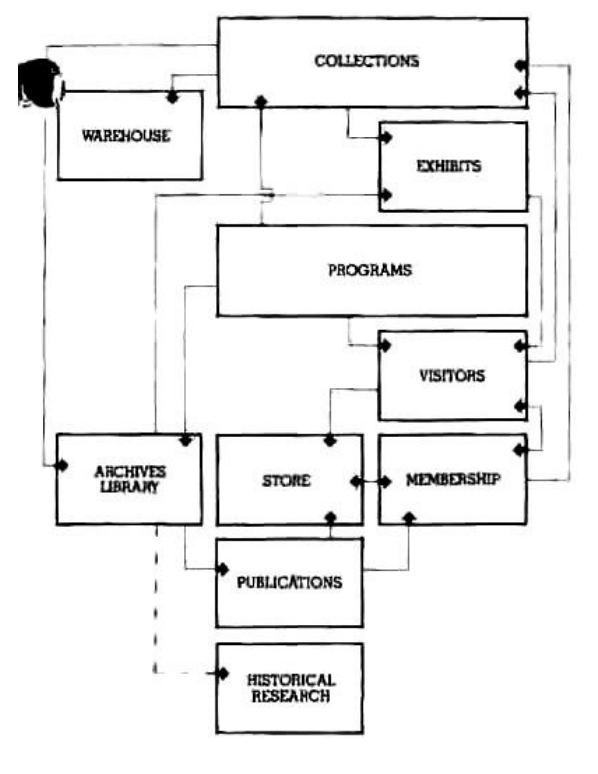
The computer museum

At first the museum was located in Marlborough, Massachusetts, and was funded by DEC, but it immediately became obvious that the museum has a large audience and it needs to expand. In order not to cause unnecessary associations with DEC, in 1982 the word “Digital” was removed from the name, the museum received the status of a non-profit charitable organization with all tax privileges, and in 1984 moved to Boston.
Work in the museum was at the Stakhanov pace: the collection grew, the archive of photos and video was gathered. About 500 different models of the first PCs were collected and exhibitions about robots and network devices were created. And in the 90s the museum finds a new audience - children. Especially for them are stunning installations: Walk-Through Computer and Virtual Fishtank.
Walk-Through Computer (1990)
Nothing special. Just a huge system unit, in which you could walk and see how the computer works and how its components interact with each other.



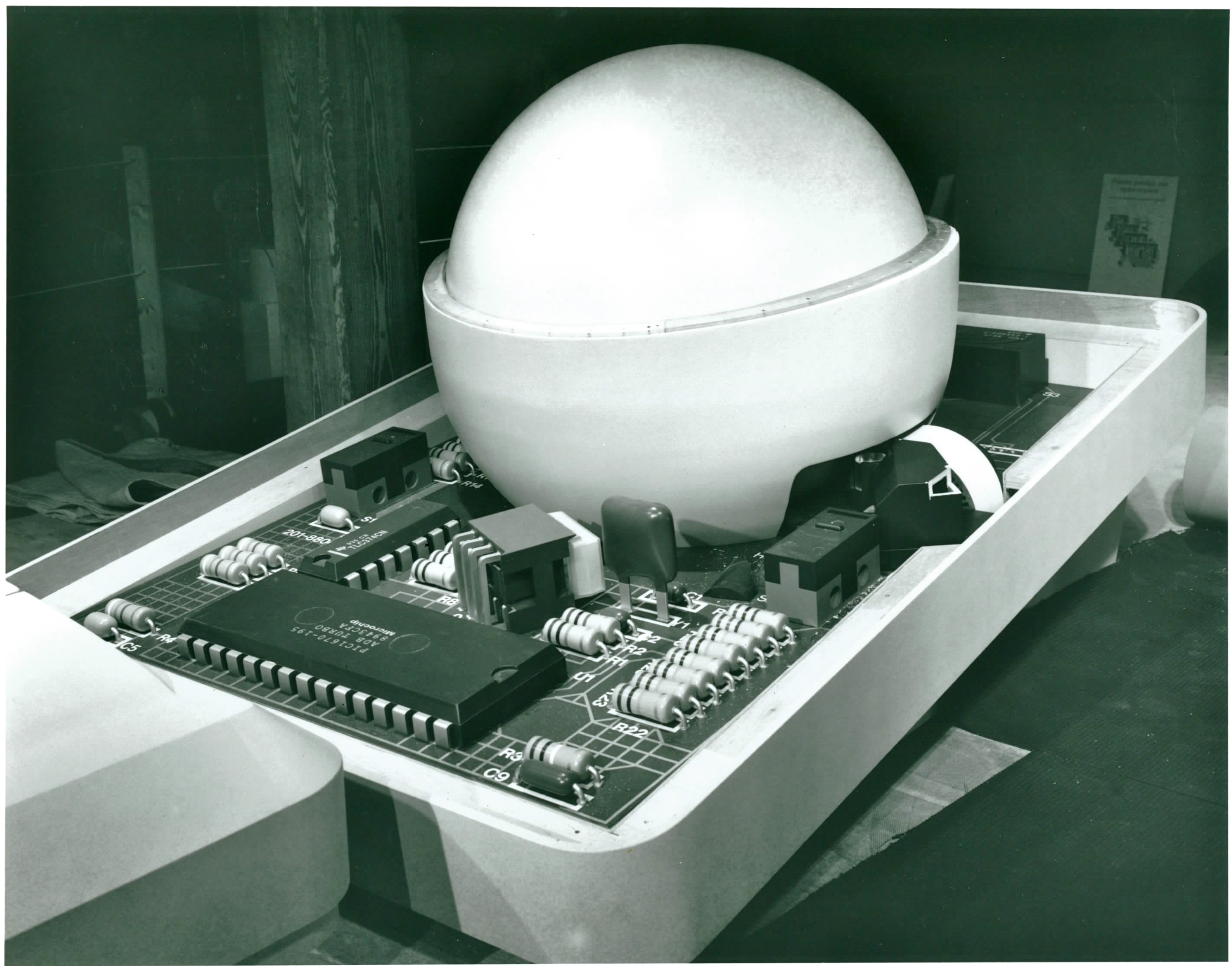

Virtual Fishtank (1998)

It was an experiment in the field of new forms of education, a demonstration of several technologies at once, and a manual on the study of system dynamics . On the twelve screens floated about a hundred cute fish, and on special displays you could change their settings, patterns of behavior, external conditions and watch how they behave.
A 10 million pixel virtual aquarium was controlled by 22 Sony Vaio PVC-200/210/220 computers (Pentium III) connected by a high-speed fiber-optic network. Thanks to this, the fish could swim from one screen to another. Diamond Multimedia video cards made it possible to change the appearance of the fish in real time. The control software used the latest technologies from Sun Microsystems: Java Development 1.2, Java 3D, Java 2D, Swing and the Java Shared Data Toolkit. Settings changed on special capacitive touch screens that sent changes to the server that controls the behavior of the fish.
In addition, in Mitchell Resnick, Professor MIT, at Virtual Fishtank, showed how decentralized systems depend on the behavior of individual subjects and how they change under different external conditions.
Here isThere is an interesting video about how Virtual Fishtank worked.
The Computer Museum History Center

In the nineties, computer industry was undergoing change: gloomy Soviet rockets stopped irritating ordinary Americans, followed by a drop in demand for supercomputers among the military, and technology companies on the east coast began a crisis. There were problems with TCM. The museum began to turn into an attraction for teenagers, research and the preservation of history went by the wayside, and most of the exhibits were gathering dust in the vaults.
At this time, young software companies on the West Coast were developing at an insane pace, and TCM was away from the main sponsors and donors of artifacts. In addition, there is a need to preserve not only the old hardware, but also the program.
In 1994, Len Shastek turned to Gordon Bell for help in creating a museum in Silicon Valley. In 1979, he was co-founder of Nestar Systems, one of the first network equipment manufacturers. In 1986, Network General, which develops utilities for network analysis, and in 1994 decided to return to science in 23 years in the world of startups and was discouraged.
It was a shame. In the end, physicists are told about Newton, chemists about Lavoisier - why computer scientists do not know about Babbage, Turing, Von Neumann and many others?
In response, Gordon suggested restarting the original TCM idea. This is how the Computer History Center in Moffett Field, California, appeared, where most of the collection went. Shastek became his leader, and Gwen Bell helped him organize the work. In 1997, the first exhibition “Visible Storage” opened in the former hangar for airships. Yes, in the beginning it was just a warehouse full of old iron, where you could walk.
Computer history museum

In 1999, TCM in Boston finally closed. All exhibits directly related to computer technology went to California, and the rest were turned over to the much more successful Science Museum in Boston. But it was not just a change of address and signage: the principles laid down by Gwen Bell were revised and expanded. Shastek proposed to create a scientific center focused on technology and their evolution, expand the TCM collection, allow professional access to the collection, library, seminars and research projects, and ensure accessibility of all materials via the Internet.
The new museum operated like many successful companies of that period. In the "fat years" successfully developed and recruited investors - here Donna Dubinsky, Shastek's wife, co-founder and CEO of the legendary PALM, tried. And after the “dot-com bubble”, Shastek himself managed to properly invest the collected funds: in October 2002, the museum acquired the former Silicon Graphic building, which donated OpenGL and computer graphics to the cinema.
By this time, the collection, which began with 225 exhibits, consisted of more than 70,000 items. Formation of expositions from this huge volume has already required a professional approach. In 2000, Kirsten Tashev joined the team of the museum, who professionally did museum work: she helped to present the story through oral recollections of victims to the Holocaust Museum in New York, created the Mammal Gallery for the Natural History Museum in London and many other interesting projects.
She turned the mausoleum with dead machines into an interactive space where you can see how this or that device works, and the exhibits are complemented by multimedia elements. Now the museum has two major exhibitions:
Revolution, the first 2000 years of Computing
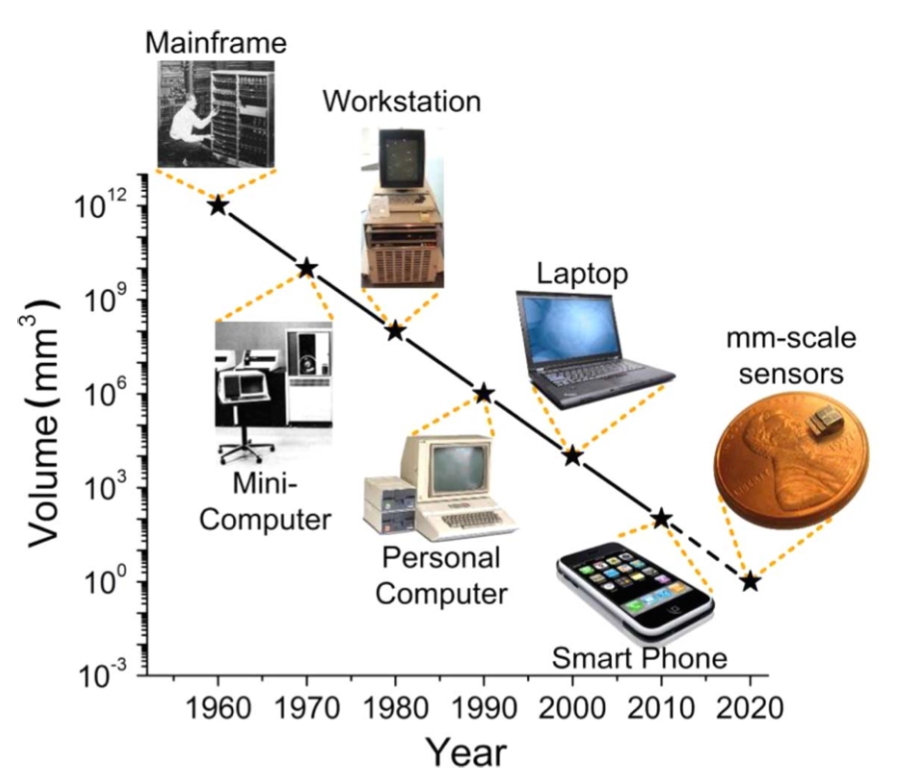
This is exactly what the warehouse of old iron can turn into if it is approached seriously. 20 galleries, 1100 exhibits and many interactive materials will tell about how computing devices developed: how simple calculating devices became complicated, mechanical calculators were created, how they turned into the first electromechanical computers, and then into huge monsters consisting of thousands of electronic tubes. And how these monsters evolved into modern PCs and smartphones.
Well, true lovers of antiquity can still see two cult computers of their time: PDP-1, and IBM 1401, both of which are 60 years old next year and both work:

Once it was a revolution. Business computerization began with it, and at some point half of all world computers were IBM 1401.

PDP-1 is legendary in that the hacking culture was created on MIT.
Make Software: Change the World!

Kirsten also solved a non-trivial task: how to show and explain software. Make Software explains and shows how people's lives are transformed by computer programs:
- The story of World of Warcraft tells how the game itself is arranged and how the virtual world begins to change the real one, how game communities are formed.
- The section on magnetic resonance imaging describes how computer software provides this technology and how it changed medicine.
- A separate part is devoted to how the technology of text messaging has evolved, their capabilities and how they duplicate the Internet in developing countries.
- The history of MP3 shows how sound transmission has evolved, wearable devices, and how small music files have shaken a huge music industry.
- On the example of Wikipedia, the principles of collaboration of a large number of people, the distribution of free content and software are disclosed.
- Photoshop photos will show what methods of working with images existed, why and how they correct images now, how they affect our perception.
- CAD capabilities are shown on automotive accident simulation software.
- The Software Lab shows all stages of software development: from project to market.
IT logging
Nevertheless, exhibitions are just a bright facade, behind which is a serious scientific and educational work. CHM is not only exhibits, but also a growing collection of personal memories of those who developed computer technology; they are now integrated into the Oral History Collection, many of them are available on the CHM channel and in the corresponding section on the site .
CHM is expanding its work into two new areas: software and entrepreneurship. The Exponential Center deals with the history of entrepreneurship and innovation in Silicon Valley, exploring the birth, growth and influence of key technology companies, the Silicon Valley ecosystem and how it serves humanity. Center for Software History collects, saves and studies the history of software, its impact on society. The annual “CHM Fellow awards” award was restarted for those who changed the world with the help of computer technology. The first in 1987, it was received by Grace Hoper.
Telling how the software or computer has evolved and how it works, CHM shows how our world is changing under the blows of the latest technologies. We live in a digital society, and the museum explores the environment that surrounds us with examples.
“Located in the heart of Silicon Valley, the Computer History Museum is the largest institution in the world that is trying to recognize the ongoing transformation era: to identify, save and show it, even when the forces of change transform events here and now. We collect, show, teach, publish and tell with one goal: we want to better understand this transformation, ”- John C. Hollar, President and CEO of the Museum.
Bonus!
For those who read: a little warm-up for the mind. Well, who can guess what domestic exotic there is in the bins CHM?
Go!
PS












